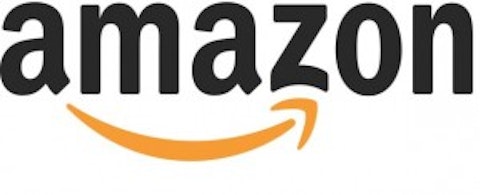
Strengths
Amazon is simply enormous, and plans to grow even more. At Amazon’s peak in 2012, the company was selling 306 items per second. In other words, it sold as much as 26.4 million items in a single day. With that type of sales, it would be tough for a business to go out of business–especially after generating $64 billion of revenue in the past 12 months. How did Amazon.com, Inc. (NASDAQ:AMZN) start from nothing and become the world’s largest online retailer in just 19 years?
Cost leadership strategy is the most obvious way Amazon has accomplished this feat. The idea is simple: Offer products and services for a cheaper price than your competitors. One of the ways Amazon accomplishes this is by establishing efficient logistics and distribution. Amazon has fulfillment warehouses spread around each of its established countries, so that shipping is cheaper for Amazon.com, Inc. (NASDAQ:AMZN) and gets to its customers as soon as possible.
Finally, one of the obvious strengths of this company is its lack of overhead costs. Amazon accomplishes virtually everything listed above because it doesn’t have any brick-and-mortar stores like most of its competitors. Utilities are minimal, the purchase of land doesn’t exist (except for warehouses), and the need to have an extensive sales force disappears.
It seems as though Amazon has it made, right? Well, there are still some issues the company needs to overcome.
Weaknesses
One of the strengths of this retail giant doubles as a weakness. Customers can walk into a Wal-Mart (NYSE:WMT) , purchase whatever item they were looking for, and walk out with it immediately. With Amazon.com, Inc. (NASDAQ:AMZN), customers can’t see or touch the item before buying it, and certainly can’t try it out.
A lot of Amazon’s products sell at zero margins, with the mindset of eliminating its competition. In the short term, that’s great, as mentioned in the section above. In the long term, doing thus hurts Amazon’s profits, and competitors will learn to adapt. By examining Wal-Mart, which initially had the same concept, it becomes obvious that competition is still a driving force in retail.
For investors, the most glaring weakness of Amazon.com, Inc. (NASDAQ:AMZN) is its price. Let’s face it — whether you’re comparing price-to-sales or price-to-book ratios, Amazon is about four times as expensive as Wal-Mart. Wal-Mart’s P/E is 15.4, while Amazon’s P/E barely breaks the 1,600 mark. It’s very expensive, and that will certainly scare some investors away, despite its attractive opportunities.
Opportunities
Amazon.com, Inc. (NASDAQ:AMZN) Prime and AmazonFresh may offer the best opportunities for Amazon, despite others, and are funded, in part, by membership fees.
Amazon Prime offers its members free two-day shipping after paying an annual fee of $79. Interestingly, this method has rewarded the company kindly. Amazon Prime members spend twice as much as non-members on an annual basis, and a 2011 Piper Jaffray survey showed that 92% of Amazon Prime members planned on renewing their membership. There are currently over 10 million Amazon Prime members.
AmazonFresh is based on the same basic idea as Amazon Prime, except that its membership fee is $299, which will include a Prime membership. It becomes obvious how large of an opportunity this could be when the Bureau of Economic Analysis estimated the produce industry to be a $850 billion market–in America alone. Just like Amazon.com, Inc. (NASDAQ:AMZN)’s normal services, some of the site’s customers can now shop for groceries from the convenience of their own home. In fact, if someone places an order over $35 or more, Amazon promises same-day delivery. For now, AmazonFresh is being tested in the Los Angeles and San Francisco Bay area.
Amazon Prime has captured more than 1 in 32 (3.1%) American citizens in just eight years, as it currently has over 10 million members. If AmazonFresh followed suit and captured 3.1% of American produce revenue, it would generate an additional $26.4 billion of annual revenue by 2021. If that’s not opportunity, I don’t know what is.
Threats
Legislation against tax avoidance may be Amazon.com, Inc. (NASDAQ:AMZN)’s largest threat. Amazon has fallen prey to taxes in 10 states, including New York, Texas, and California. Over time, this list continues to grow with as many as nine additional states considering an “Amazon tax.” This would force the company to collect local sales and use taxes from its customers, which would take away from Amazon.com, Inc. (NASDAQ:AMZN)’s competitive advantage.
Online security could also threaten the company. At the end of Q4 2012, Amazon had 200 million active customers. The more customers they acquire, the more of an attractive target it becomes for hackers. Amazon stores customers personal information, sometimes including bank account information, which could be hacked. Obviously, this could be disastrous, not only for Amazon’s users, but for the company’s reputation.
The bottom line
Amazon.com, Inc. (NASDAQ:AMZN) offers investors some impressive opportunities, as well as some solid strengths. Despite these things, weaknesses and threats still exist for this retail giant. It’s an expensive buy, but also has a lot of upside. What are your thoughts?
Tyler Wofford has no position in any stocks mentioned. The Motley Fool recommends Amazon.com. The Motley Fool owns shares of Amazon.com, Inc. (NASDAQ:AMZN).
The article Does Amazon Face More Challenges or Promise? originally appeared on Fool.com.
Tyler is a member of The Motley Fool Blog Network — entries represent the personal opinion of the blogger and are not formally edited.
Copyright © 1995 – 2013 The Motley Fool, LLC. All rights reserved. The Motley Fool has a disclosure policy.




